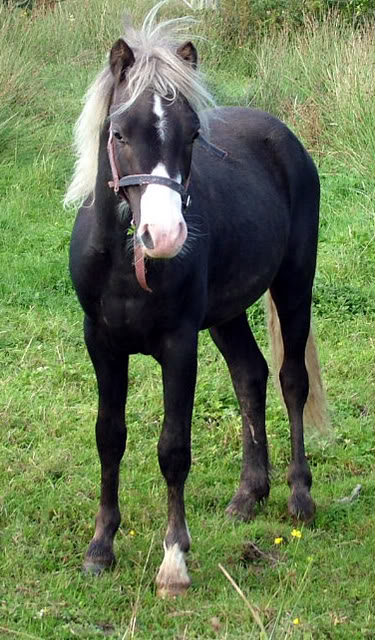

(picture by Tom Campey after the ancient Lasceaux cave paintings) There’s a whole chapter on Wild Horses – Brumbies, Mustangs and many more in “Lights! Camera! Gallop! The Story of the Horse in Film” an illustrated paperback or eBook available on Amazon: Find out more here! Number of animal exhibits and usually a cracking good exhibition.

The museum is very well worth a visit – it has a huge You can find the Quagga in the Natural History Museum at There is however, in the same museum, an illustration made some 49 years earlier (See below). She – for it was a mare – was the only Quagga ever photographed. The tail is more Zebra-like than that of today’s horse. You will also see that the body is quite long, relative to its short legs. It was bought by Walter Rothschild (well, it had to be someone wealthy I suppose – and he founded a whole museum) in 1889. The Quagga in the picture shows the horse’s characteristically reduced stripes and brown colouring. Quaggas became extinct because of what has – unfortunately – become a familiar The last known Quagga died in Amsterdam Zoo, back in 1883. Is a Quagga, a subspecies of the Zebra, found when it was alive on the plains Is a real opportunity to see what one looked like. Place to see an extinct horse! OK, I admit it’s a stuffed extinct horse. Photo from Woburn Safari Park, soon after birthĪnd the update: Just look at this picture (again from Woburn Safari Park) to see how big and playful Visumuzi is now! Somali Wild Ass foal December 2021 (photo by Woburn Safari Park)īy the way, to read about wild horses and their relatives in film and on tv, check out Lights! Camera! Gallop! Illustrated paperback and kindle book on Amazon Their most distinctive features? Just take a look at those lovely black horizontal stripes on their legs. Somali wild asses are mostly grey in colour, with a white belly and a short, upright mane.

They named him Visumuzi in honour of the breed’s African heritage. The foal – a male – was soon suckling well and exploring its surroundings. This is despite the Wild Ass being on the world’s Critically Endangered list. Here’s the background: Back in July the Safari Park (based in Bedfordshire, not very far from London) had successfully bred a Somali Wild Ass. Great update recently from Woburn Safari Park.


 0 kommentar(er)
0 kommentar(er)
